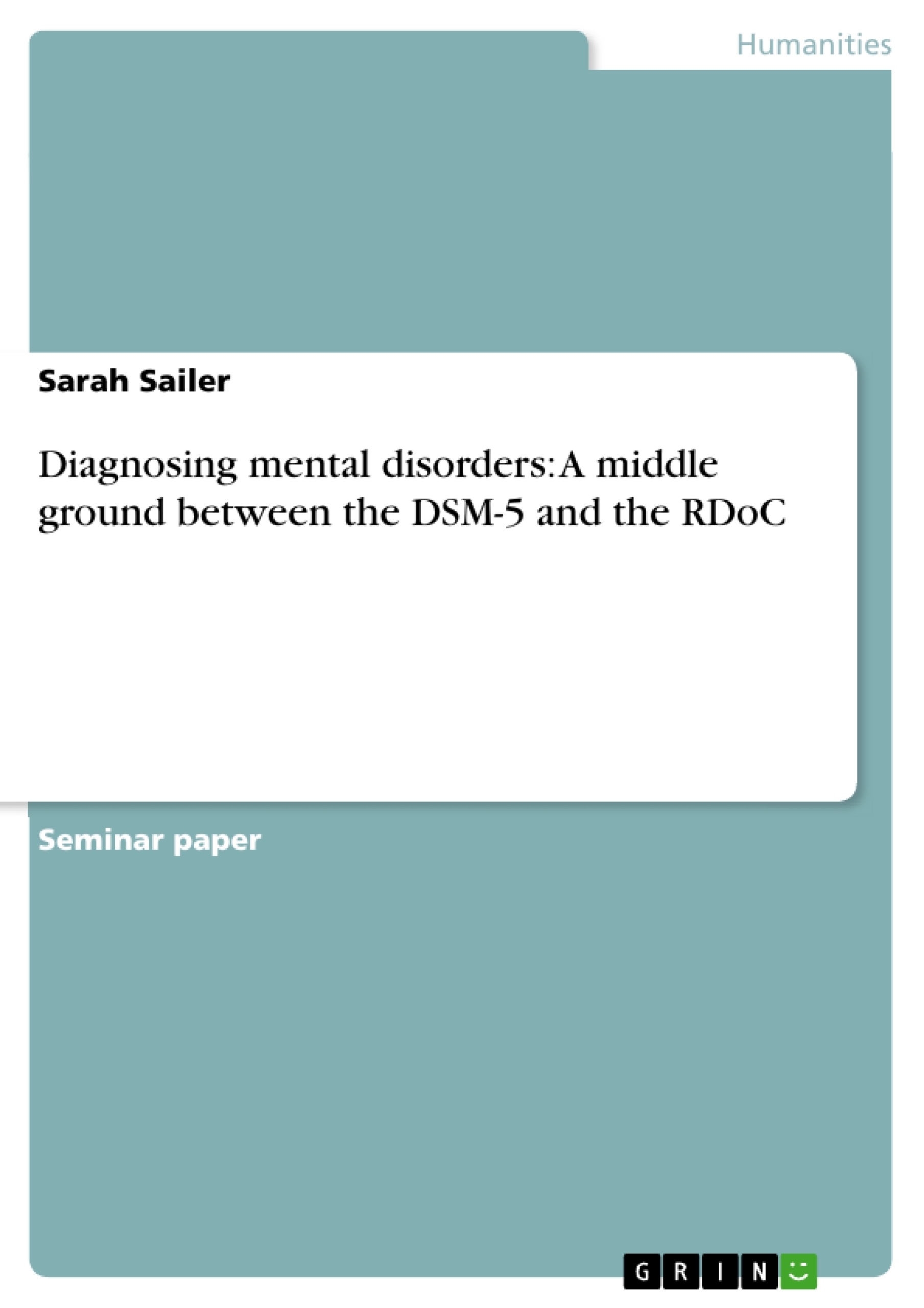How exactly should we define different mental disorders? How should they be treated? And how should mental disorders be classified? This paper aims to answer the last question and analyze the different classification systems DSM-5 and RDoC. Both systems will be introduced, their characteristics will be discussed, and the emergence will be analyzed. Advantages, as well as disadvantages of both positions, will be identified and examined with the ultimate goal to give an assessment on which classification system should be used in which way or if there is some kind of consensus to be found.
Table of Contents
- Introduction
- DSM-5
- What is the DSM-5?
- Advantages of the DSM-5
- Disadvantages of the DSM-5
- RDOC
- What is the RDOC?
- Advantages of the RDOC
- Disadvantages of the RDOC
- What now?
- Conclusion
Objectives and Key Themes
This paper aims to analyze the different classification systems DSM-5 and RDoC, exploring their characteristics, emergence, advantages, and disadvantages. The ultimate goal is to assess which classification system should be used in which way or if there is some kind of consensus to be found.
- Defining and classifying mental disorders
- The categorical approach to mental illnesses
- The DSM-5 as a diagnostic and taxonomic tool
- The RDoC as an alternative classification system
- The use of classification systems in clinical practice and research
Chapter Summaries
- Introduction: This chapter provides a historical overview of mental disorder classification systems, focusing on the development and evolution of the DSM. It introduces the DSM-5 and the RDoC, highlighting the need for a comprehensive analysis of both systems.
- DSM-5: This chapter delves into the details of the DSM-5, explaining its purpose, structure, and its impact on diagnosis, treatment, and public perception of mental disorders. It also discusses the categorical approach used by the DSM-5 and its limitations.
- RDOC: This chapter presents the Research Domain Criteria (RDOC) as an alternative classification system. It explains the RDoC's framework and its advantages and disadvantages, highlighting its focus on underlying biological and psychological processes.
Keywords
This paper focuses on the diagnosis and classification of mental disorders, exploring the DSM-5 and RDoC as two primary systems. Key terms and concepts include: mental disorders, classification systems, DSM-5, RDoC, categorical approach, dimensional approach, diagnostic criteria, clinical practice, research, advantages, disadvantages, consensus, and future directions.
- Quote paper
- Sarah Sailer (Author), 2020, Diagnosing mental disorders: A middle ground between the DSM-5 and the RDoC, Munich, GRIN Verlag, https://www.grin.com/document/1176126




